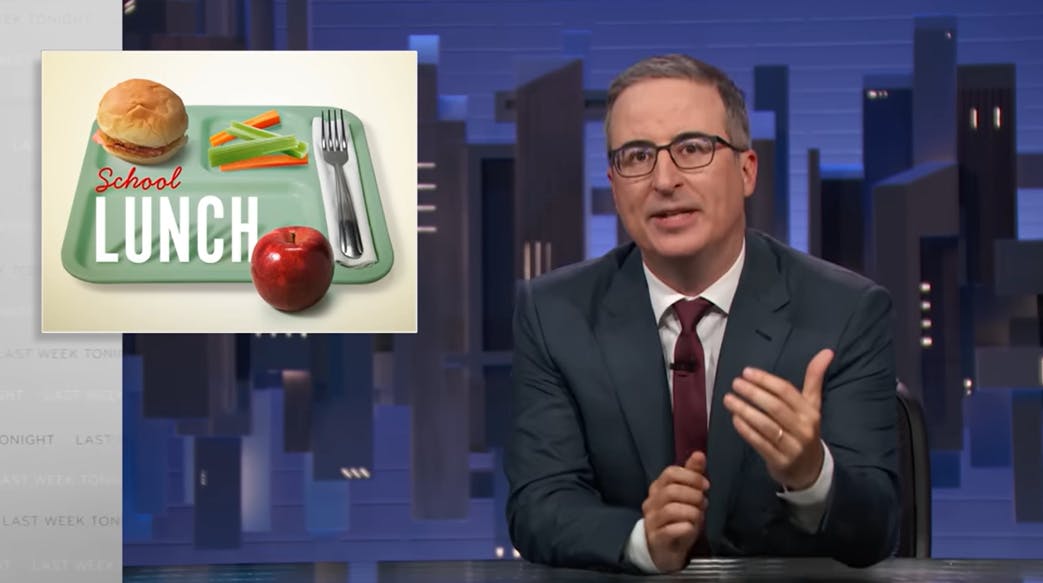

To Fight Child Poverty, Feed Kids in School
Insights
September 16, 2024
By: Julie Kronick
Children and youth in New York have been back in school for two weeks now, stirring up discussions around student needs and child well-being. In national media, as well as local New York media, school lunch has been a major back-to-school topic at the forefront of conversation—even drawing attention on air in a segment from Last Week Tonight with John Oliver.
lunch has been a major back-to-school topic at the forefront of conversation—even drawing attention on air in a segment from Last Week Tonight with John Oliver.
Free school meals reduce food insecurity among children in our communities which has an overall positive impact on child health and well-being. These programs also uplift child well-being by increasing economic security for families. School meals can cost families hundreds of dollars per month, so reducing this cost burden also overall correlates with child poverty reduction, as many families in debt for school lunches earn just over the threshold to qualify for free or reduced cost meals. According to a data publication from Healthy School Meals for All (HSMFA), a New York coalition of nonprofit organizations including CCC, a family of four earning just above $55,500—far below a living wage in our state—does not qualify for free school meals. As is discussed in the John Oliver segment, children will then often choose to skip lunch to avoid financially burdening their families, which can impact their education and overall health.
According to Feeding America, nearly 1 in 5 children in New York State experience regular hunger as the rate for child poverty in the state remains unchanged since last year, holding at 24.5%. Our own data analysis shows that in 22 counties in the state, more than 20% of children live in households below the poverty level. But since the cost of living in New York is higher than the national average, we also know that thousands more families in our communities are struggling with food insecurity among other material hardships—most without access to benefits, including free school meals. Further, Black and Latine children are twice as likely to be affected by hunger and food insecurity. Students facing hunger struggle to focus while in school, tend to have lower attendance, and are at higher risk of mental and physical health problems.
During the height of the pandemic, the United States Department of Agriculture issued a series of waivers that allowed school nutrition programs throughout the country to serve free meals to all public school students. When this aid expired, New York State saw a rise in school meal debt, and as of March 2023, 126 school districts had a total of $1,414,122.86 in unpaid school meal debt. The survey that collected this data also found that rural and suburban districts were more likely to have significant meal debt while the meal debt itself could impact a school district’s finances, making it harder to provide healthy meals overall. Free school meals work for the benefit of all community members.
Assemblymember Jessica Gonzales-Rojas has been a very vocal proponent of school meal access and reducing child hunger in New York. She has continued to push for passing of a bill she sponsors that would “require all public school districts, charter schools and non-public schools in the state that participate in the national school lunch program or school breakfast program as provided in the national child nutrition act to serve breakfast and lunch at no cost to the student.” Back-to-school discussion has prompted a vocal, renewed call by for the passage of this bill, and CCC is in support of it. This program year and legislative season we will continue work within the Healthy School Meals for All NY coalition to push for free school meals for all New York students.
Similarly, New York Senator Kirsten Gillibrand is calling on federal lawmakers to approve the Universal Schools Meals Program Act. It would provide free breakfast, lunch, dinner and a snack to all students regardless of income in all states. This bill is connected to research that shows the correlation between children who eat breakfast and positive education outcomes as well as data showing a correlation between well-fed children and reduced behavioral issues. As mentioned above, free school meals is also a tool to fight child poverty across the U.S., especially at a time when the cost of living has significantly increased in the wake of the pandemic for all American households. Currently, the Food and Research Action Center has a call to action for this bill that you can sign online here.
Food security is a major component of our efforts to improve child health and economic security and reduce child poverty. We will be advocating for policy, legislation, and investments that increase food security this program year, so stay connected to us to learn more and take action when the time comes.




